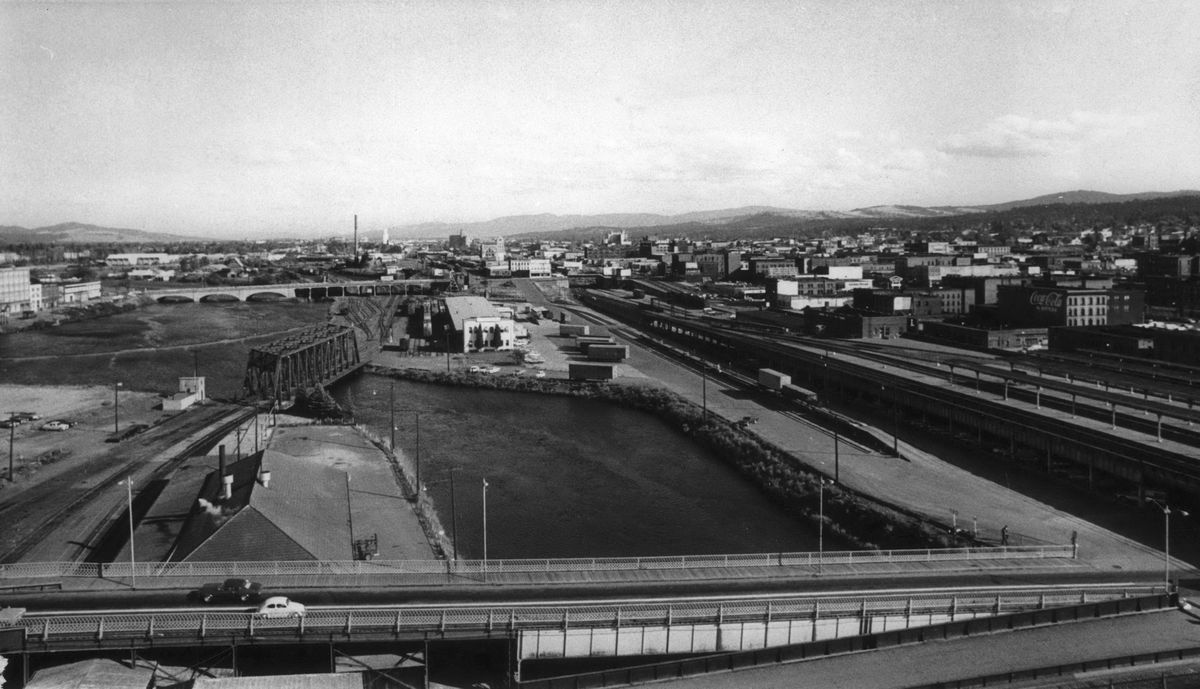Then and Now: Washington Street Bridge

Early bridges across the various channels of the Spokane River were made of wood, then steel, and, eventually, concrete or stone. And when the Great Northern Railroad depot opened on Havermale Island in 1902, with its iconic Clocktower, access from downtown was only via the Howard Street bridge. So a new steel-supported bridge was hastily built, aligned with Washington Street, that dead-ended at the depot to get passengers to the trains.
But within a few years, planners wanted to connect Washington Street, already designated as a north-south arterial to the South Hill, to horse-drawn and automotive traffic on the north side.
Two bridges were finished in 1908: A long concrete bridge over the north channel and another on the south channel that angled up steeply enough to clear the GN train tracks on Havermale Island to keep traffic moving during train operations. The original road bed was heavy timbers.
Fast forward to the 1960s and the steel beams under both Washington Street bridges were decayed by rust and a 12,000-pound weight limit was posted in 1971 for safety.
Traffic planners began planning for Washington and Stevens streets to be a couplet of one-way arterials through the downtown area. A Y-shaped bridge coming out of a tunnel on Havermale Island was put out for bid. Expo ’74 was just around the corner and the elegant bridge was also seen as a way to beautify the riverfront.
Glen Yake, the assistant city manager for engineering, said the bridge design would separate arterial traffic from pedestrian traffic and “give pedestrians a new and most pleasant experience in a park-like setting as opposed to a walkway adjoining the traffic way.” The state Urban Arterial Board would pay for most of it and the new tunnel on the island would keep cars and trucks moving while parkgoers strolled unimpeded.
When the first drawings of the bridge were released in 1972, city manager Sylvan Fullwiler called the bridge a “magnificent contribution to beautification of the entire downtown district.” Fullwiler said the bridge “will have a significant impact on the traffic flow through the central business district.” The couplet bridge opened in July of 1973.